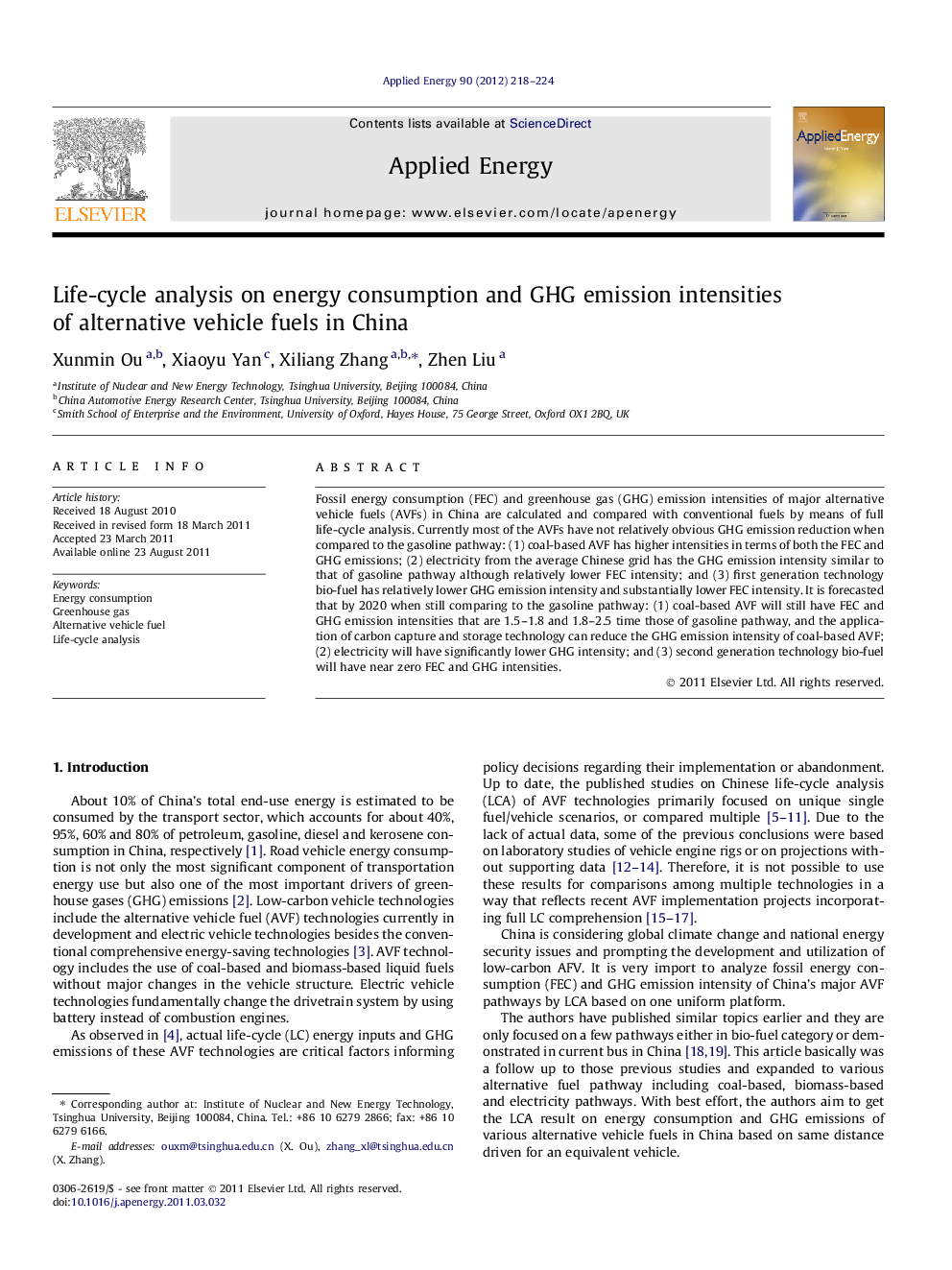| Article ID | Journal | Published Year | Pages | File Type |
|---|---|---|---|---|
| 243928 | Applied Energy | 2012 | 7 Pages |
Fossil energy consumption (FEC) and greenhouse gas (GHG) emission intensities of major alternative vehicle fuels (AVFs) in China are calculated and compared with conventional fuels by means of full life-cycle analysis. Currently most of the AVFs have not relatively obvious GHG emission reduction when compared to the gasoline pathway: (1) coal-based AVF has higher intensities in terms of both the FEC and GHG emissions; (2) electricity from the average Chinese grid has the GHG emission intensity similar to that of gasoline pathway although relatively lower FEC intensity; and (3) first generation technology bio-fuel has relatively lower GHG emission intensity and substantially lower FEC intensity. It is forecasted that by 2020 when still comparing to the gasoline pathway: (1) coal-based AVF will still have FEC and GHG emission intensities that are 1.5–1.8 and 1.8–2.5 time those of gasoline pathway, and the application of carbon capture and storage technology can reduce the GHG emission intensity of coal-based AVF; (2) electricity will have significantly lower GHG intensity; and (3) second generation technology bio-fuel will have near zero FEC and GHG intensities.
► We analyzed the life cycle energy intensity and GHG emissions of about 40 pathways of alternative vehicle fuels in China. ► Coal-based liquid fuel has higher life cycle energy intensities and first generation technology bio-fuel has relatively lower intensity. ► By 2020 electricity will have significantly lower GHG intensity and second generation technology bio-fuel will have near zero intensities.
